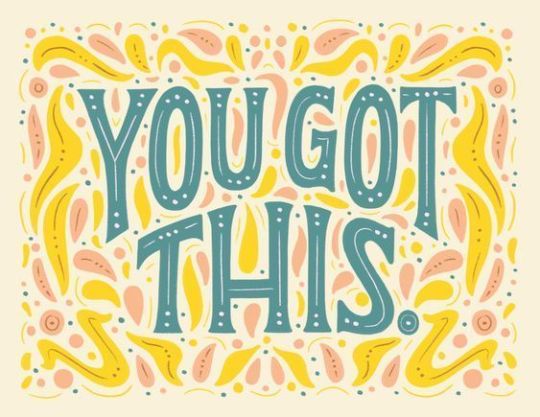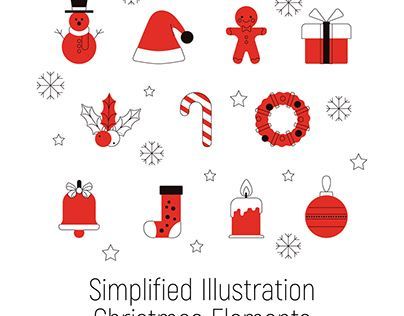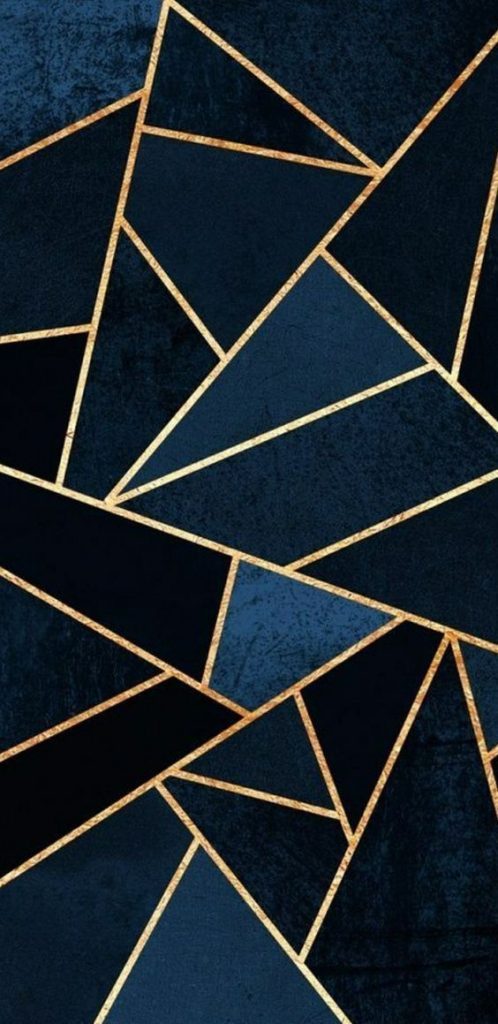#the realism to sketchiness balance is just right <3
Text

i'm turnin into some dust, i'm turnin into some bats!!!1 🦇🦇🦇
HI! my comissions are open so check out my pinned post if you're interested ^^
[ID: A digital painting of Gerard Way wearing their bat costume. They are holding the microphone over their mouth, and they're looking to the left. They're surrounded by fog, which is drawn in messy spiraling lines. The color palette consists of various shades of teal, and they have a pink heart drawn in each cheek. End ID]
#drawing fog in ms paint was a challenge!!! but i really like the outcome x33 i think this might be one of my favourite mspaint paintings!!#the realism to sketchiness balance is just right <3#also have the little hearts as a treat <3 i wasnt sure wether to include them or not but as the wise ones said “yolo”#ok TAG MOMENT#mcr#my chemical romance fanart#my chemical romance#mcr fanart#mcr art#gerard way#gerard way fanart#swarm tour#swarm era#mcr swarm#mcr return#mcr reunion#ms paint#my art tag#bondilluns.art
822 notes
·
View notes
Photo

Being a dungeon master can be intimidating, especially if you’ve never done it before. However, it can also be an incredibly rewarding experience that boosts self confidence. Running a session (let alone a campaign) is a lot different than being a player, but there are only a few things you need to know in order to be labeled a great DM.
Plot Line
Develop a main goal
Have purpose
Come prepared... but not too prepared
MAIN GOAL - When it comes to developing a plot line for an entire campaign, I see two ways of doing it: having a complicated main plot where 90% of the time is dedicated to solving/working through the main plot, or, having a simple main plot with lots of room for sub-plots. I’ve seen the first done really well, but I am personally a fan of the latter. It leaves so much more room for player character development as they navigate through the NPCs and the diverse set of problems thrown at them. On the contrary, I find that running complex campaigns without subplots is more focused than the other type.
An example of a complicated campaign plot would be a political scheme plotted between all of Faerun to rise Tiamat from her slumber. The party knows this, and they travel around the land in search of answers. They have the same goal in every town they visit, and everything they do is centered around stopping (or aiding) the rise the primordial goddess.
An example of a general plot with many subplots would be that the party has to light the hearths of a multitude of villages to prevent a celestial attack. They have time before this attack happens, and they run into other villages that need their help along the way. Maybe a woman’s daughter was taken? Or there is a cursed well that spits out an undead creature every once in a while that needs to be taken care of?
There is a difference between the two styles, and deciding what kind you want to run before you go into running your session is crucial. If you change midway, things can get confusing, or feel rushed.
This page is for novel writers, but it is extremely useful for developing a plot and taking your PCs into consideration when planning.
This video is centered around RPGs and goes through plotting step by step.
HAVE PURPOSE - Know how you want your campaign to go before you sit down in the DM’s chair. Understand your main goal, and where you want your players to be at the end of the campaign. Do you want them fighting an all powerful fiend? Maybe competing to be the rulers of an all new nation? Are they going to try and save the world? Once you have that, you can build the stepping stone to get them there: sessions.
Each session should bring them closer to the end goal. So, have a plan for each session. Make each session have a purpose, and make sure it relates somehow to the end goal. Do they need to be here to meet an NPC who will give them information? Is there a magical item that will help them on their journey? Is there an enemy or an ally to be made?
COME PREPARED - Walk in knowing the environment you will present like the back of your hand. Know (or have notes) on everything your players could potentially have access to in the area you drop them in.
Have NPCs ready to go with their stats in case they need to fight, have the map of the location so vividly in your mind that you could draw it half asleep. Place the NPCs in their proper locations. Many people think when they’re just starting off that they need to have a plan for anything their players will throw at them. I thought that too. But turns out, that’s not true. You just need a plan for every place your players could possibly go. Understanding this is a lot less stressful and will take a lot less time. You probably didn’t have a plan for your friend’s dwarf running headfirst into the chimney. But you know the location, the building, and the attitude of the NPC. That is efficient enough to figure out on the spot what happens to the PC. Was the building of sound structure? Maybe in your mind it wasn’t, so the whole thing comes crumbling down and everyone needs to make a dex save. Maybe it was of sound structure in your mind, and the PC bursts right through. But you’d decided that these woods are infested with elementals. So, time for the party to roll initiative.
Come prepared when it comes to the location and setting, but don’t try and prepare for what your PCs are going to do once they’re in it. Players do weird things sometimes, and sometimes subliminal messages aren’t received. So there was a murder in town and you mentioned a sketchy looking character with blood on his clothes walking around the tavern??? Well, your players want to investigate the victim’s husband instead because you described his mustache for a suspicious amount of time. I cannot stress this enough, this happens all the time. It can be frustrating, but you just have to follow them through what they want to do and adjust what you imagined to fit their decisions. If you have your NPCs and locations fleshed out, then that won’t be hard at all.
People think the DM is the one who controls the game, but not really. And in my opinion that’s the way it should be.
Quick and easy NPC stat maker.
Encounters
Balance
Making enemies
Distributing XP
BALANCE - Encounters need to be balanced. You don’t want them too easy, but at the same time you don’t want to have a TPK. I personally use the CR system. In general, the way to use the CR system is that you take the average level of players in the party should equal the CR of the creature/added total of the creatures. So, if you have level three creatures, it’s okay to have them fight a boss CR 3 insect. It would also be fine if they fought two CR 1 quadrones and two CR 1/2 Ambush Drakes. Fighting one CR 1 quadrone would be far too easy, but fighting a CR 5 Hulking Crab would wipe them out.
This system is built for 4-5 players, so aim a little less if you have 2-3 players, or a little more if you have 6+.
D&D Beyond has a great selection of official monsters as well as other people’s homebrew monsters.
MAKING ENEMIES - Whatever idea you have for a creature, especially if it is something out of other folklore, has probably been made into a 5e creature by someone somewhere. A lot of the time though, it isn’t balanced for your party level. So, you have to adjust it.
When it comes to adjusting official or other homebrew enemies, I always recommend looking at other creatures of the proper CR and adjusting the values. Maybe make that 4d8 damage just 1d8 damage? Or take away the fact that this creature can make 3 attacks. It’s all what you make it.
If you decide to create something entirely from scratch, draw inspiration from other creatures of the same CR needed for you party. Make sure you take into account the party composition to see what the party can handle.
Matt Mercer explains this really well in this short video.
DISTRIBUTING XP - This point is a bit controversial, but it can be used for the sake of realism (even if it is a fantasy game). Experience is relative, and shouldn’t be limited to fight scenes. Think about how experience goes in real life? What makes people grow? For most people, the answer isn’t anything physical. Give experience points for trying to learn a new trade or making a connection with another character.
Take their backstory into account too. Maybe there is a PC who has never killed before. The first time they kill someone would be a big deal and a major life event for them, as opposed to someone who is an assassin who has been killing since they were a teenager. And maybe that assassin has never had a true friend, so forming a bond with someone would be major character development.
This also accounts for enemies. The ranger who specializes in killing the undead should earn less XP than the monk who is encountering them for the first time. It is an eye opening and probably terrifying experience for the monk, but for the ranger it’s just another day at the office forest.
Attitude
Be confident
Listen to your players
BE CONFIDENT - Being a DM is a performance. You are playing different characters and creating a story for the rest of your group to enjoy. Not to put anyone under pressure, but if you’re going to be the DM, you’re going to be the star of the show. People’s entertainment depends on you.
Now, with that being said, there are an infinite amount of ways to DM. You can speak mainly in descriptions and simply summarize the main point of what the NPSc are trying to say as an indirect type of DMing. Or, you can take on the voice of the NPC and have full fledged conversations with the PCs, a more direct approach. One is not better than the other; it’s all a matter of personal preference. Me? I like the indirect way since I suck at doing voices, and two people in my group like playing that way while the other two prefer the more direct approach. It’s a toss up really. You just have to decide what you want to do and own it. Whether you decide on the direct or indirect way, the choice isn’t going to make a huge difference on how much fun the party has. The deal breaker is how well you sell it.
Have a strong voice. Be confident in what you’re doing. If you seem confused or nervous, your players are going to sense that and absorb it. So, just fake it til’ you make it. You may have no idea what is going on or why, but neither do they. If you throw a dragon at them just to keep them busy so you can plot something really fast, they’ll have no idea as long as you make it seem like it was intentional. Remember, they don’t know what is supposed to come next. They don’t know what’s inside that boarded up cottage, so how can they tell you that that they find wasn’t supposed to be there?
Here is an excellent link that describes the different types of playing and DMing.
LISTEN - This is the most important part of being a DM in my opinion. The whole reason you’re able to put on this story is because of the people playing with you. They are who you do it for, so make them matter.
Incorporate the PCs’ backstories into the sub-plots or the main campaign. Maybe something in their background is the reason why only they can defeat the Big Bad™? Or, what I find to be more thoughtful, take obscure details about each character and make them a central part of a session without the player even knowing it.
In my campaign I took the party deep within the woods, where they stayed in a small, flourishing village. The village was a sanctuary in the middle of a dry and dying forest. Turns out, the main villains had captured a celestial and was draining it’s power in order to feed the land. The three villains (A wizard, a sorcerer, and a warlock) bound the celestial and locked it underground in a cell that could only be opened by dropping three objects that contained the blood of the binders in the ditch above the cell. The celestial was able to send mind controlling insects into the town so they could possess civilians and have them look for the three objects that could set the celestial free.
The party knew what was going on with the possession, and they noticed since the beginning that the possessed people were drawn to one PC in particular. In the end, the necklace that specified PC had (and had since childhood) was the object that contained the binding sorcerer’s blood, and that was the final piece to release the trapped celestial.
That whole session was centered around one PC without them even knowing it until they end. They played a huge part in a session because I used a minor detail in their character backstory to my advantage. The whole party loved it and talked about it for weeks. People create characters and write backstories because they care about them, and the best thing you can do as a DM is to acknowledge and respect that character and your player’s work as much as they do.
You’re creating a world for your PCs to react to; you’re not writing a novel. Make their choices mean something. Even if you want them to go right, let them go left. Don’t let them go left and give them the same scenario they would have had if they’d gone right. Players can see when you’re railroading them into doing what you want them to do, and it is disheartening and discouraging. Why would they care what their character did if it didn’t matter anyway? Why should they think about the outcomes, or try and figure out the riddle? From what I’ve observed, this is the biggest in-game issue that tends to make groups dissolve.
That was a really long post, and I thank you for reading it until the end. I hope everyone took something away from this guide and that those just starting to DM or who are thinking about it feel more comfortable going into it.
41 notes
·
View notes
Text
What Design Trends to watch out in 2020

Design Trends keep changing. What looks trendy and classy one day may look outdated and irrelevant the other day. So, as a designer, if you want your designs to look relevant and stay on top of the game you need to keep tabs on the evolving design trends.
2019 was a breakthrough year for the design, with trends like simple shapes, custom 3D visuals, and isometric design taking over the digital space. We prepare to enter a new decade you may be wondering a list of design trends to look out for in 2020. To find out, Our team at UXKick is constantly analyzing market shifts to identify what’s new and next and have compiled a list of design trends to look out for in 2020. If you are looking out to maximize the performance of your visual, check out the industry shakers that will define the design landscape in the years to come.
1. Inclusive designs: Inclusive designs are focussed at extreme users that are sometimes overseen by other design processes. The primary goal of the inclusive design is to make the product, service or environment more inclusive i.e. the wider diversity of people should be able to easily use. By focusing on extreme users, inclusive designs will enable a specific product, service or environment to be used by any group of users. For Example, while designing a building using inclusive design it is designed in such a way that building is accessible for different groups of disabilities.
According to the Inclusivedesign.scot, The principles of inclusive design are as follows:
Responsive: Taking account of people that say they want and need.Flexible: so different people can use it in different ways.Convenient: so everyone can use it without too much effort.Accommodating: for all people regardless of their age, gender, mobility, ethnicity or circumstances.Welcoming: with no disabling barriers that might exclude some barriers.Realistic: more than one solution to help balance everyone’s needs and recognizing one solution may not work for all.

2. Monochrome Illustrations: The resurgent color schemes were popular in 2018 and the severity of interfaces was chosen by the product-based companies, emphasizing the elitism and high-quality nature of their product. This year we saw an increase of monochromatic color effect on pictures across the industry by various graphic designers, Following year Monochromatic illustration of simplified versions will emerge as a trend.
3. Custom Typography: No matter which industry you are in, Already the space is too cluttered with competition to grab your customer's attention. A custom approach to Typography will take a backseat yielding to expensive font licensing. In 2020 most of the global brands and SMBs will invest in custom typography to help them stand out in the crowd and at the same time save the expensive license fees. Just before designing the custom typography, make sure the typography strongly depicts your business and brand.

4. Textured 3D design: 2019 has seen the rise of 3D designs and certainly this trend will see upward usage in the coming years. The three-dimensional method is expected to advance by adding a layer of realism in textural experimentation. Textures are the flat images that are applied to a model to give it color and detail rather than them being blank and boring. In 2020, we will be seeing a way better three-dimensional graphic design composition.

5. Simplified Illustrations: When it comes to graphic designs, The simplified illustrations is a top choice as it gives a designer to incorporate ideas, concepts to communicate a message through illustrations in their designs in a very befitting manner. In 2020, we can expect to see more and more custom made and simplified illustrations to become one of the key ways brands communicate their identity. This design may look oversimplified and sketchy.

6. Geometric Designs: Geometric designs involve the representation of free form curves, surfaces or volumes and are related to Geometric modeling. Any designer (UX, Graphic, UI, Visual) will be able to relate the artwork created to basic geometric shapes. These basic shapes may look simple but require a lot of work in order to recreate composition that passes the right meaning to his observant. Since all the designers are aiming at simplicity in the designs, The year 2020 will be seen a lot of upward trends of geometric designs.

7. Realistic Textures: The patterns and textures dominated were faded into the background when flat design ruled the design word. After several years of ethereal gradients and impossibly smooth isometric objects dominating the world of design, Realistic textures are making a come back. With grains and contours that make anyone want to reach out and touch them, In 2020 the realistic texture trend will see a huge potential for experimental design.

Let the year 2020 be the best year yet by challenging yourself to incorporate trends masterfully. These design trends are super impressive and diverse, we will see some amazing designs crafted to perfection with typography, mesmerizing color combinations, line art, doodling, Liquid patterns in one design and many more design trends.
If you are wondering what might have been the design trends of 2019, No problem we have article covered for you. Check it out by clicking on the hyperlink.
What are your views on the web, digital, UX design trends of 2020? We would love to see what you think in the comments section!
Read the full article
#2020designtrend#2020graphicdesigntrendsbehance#designgraphictrends2020#designthinkingtrends2020#designtrendsdigital#designtrendsexamples#designtrendsexplained#designtrendsfor2020#designtrendsforthenextdecade#designtrendsfuture#designtrendsinwebdesign#designtrendsthatareout#goodwebsitedesignpractices#goodwebsitedesigntips#graphicdesigntrendsbydecade#thedesigntrendsbangalore#websitedesignandtrends
0 notes
Note
I stumbled onto your blog and I'm just!!So blown away! Your color style and art is just so incredible to me and I want you to know that it motivates me to continue learning color theory and to develop my own style. I love the fact that you've drawn so much Naruto as well, haha. On a side note, I was curious as to what brush you use for the recurring, sketchy, flick type of line that makes up parts of your paintings? And also, how do you decide on the colors you use? Sorry for all the questions:p
As for the brush you [might be] referring to (I’m not really sure which one was that has caught your attention, as most of them have this sketchy quality), the flick thin one is called Arch_B_V_3 (yeah, such a poetic name) and I could’ve obtained either via numerous free packs offered on DA and beyond, or it was a part of some premium brush pack from, say, 6 or 7 years ago. Or you could drop me links/names of the particular arts that display the brush in question to help me figure it out (for it might’ve been one of Kyle Webster’s brushes just as well).
And oh, the decision on the colour use - what a beautiful question it is, thank you, seriously thank you for asking. I’m afraid though, there won’t be any practical take-it-and-use-it answer on my part - as for the longest time the question of colours has been more of a philosophical aspect than practical, for me.There’re of course some basics of colour use we all learn as the first steps - the colour wheel, the contrasts and the complimentary colours, the warm and cold, all this jazz you’re probably well acquainted with already, however the irony is that none of this knowledge comes to the immediate attention when actually painting (as in - not the practice sort of a colour study, where we learn, but an actual act of painting smth outside of learning sequences).This is more of psychological aspect that begins here - one of analyzing your actions (on the canvas), and more importantly, your feelings [and that story is truly endless in all the possible aspects arising]. And as a result - analyzing what final result you might want your viewers not only to see but to feel as well. So here the mathematically practical theory of colours clashes with your own self and the emotional balance you choose for your particular piece of art. This isn’t necessarily the meticulously calculated kind of balance, more often than not it’s some sort of an intuitive insight one yearns to turn into shapes and colours, and the irony is - every colour can be instrumental. There’re no ‘agressive’, ‘sad’, ‘joyous’ colours per se, although some accumulated design templates in our graphic, interior and exterior environments definitely suggest certain patterns (ones that teach you that red is danger, purple is depression and yellow is anxiety - oh wait~, red is passion, purple is royalty and yellow is bliss - et cetera, depending on the context more than on the colour itself).The trick is - every colour is at your service, for radically every form of an emotional message you want to convey. This might sound quite obvious, in a sense, but in actuality it took me quite some time to figure e.g. that the skin doesn’t always have to be painted with your regular skin tones - especially if we’re not striving to practise precise realism - or that a mood of extreme angst and sadness can play out in otherwise cheerful oranges and yellows just as well as it could do in more traditional, so to say, cold tones. So bottom line to this would be - the decision for choosing colours relies on the desired impact, emotional response (from art to the artist, from art to the viewers - you name it, depending on the reasons you create it in first place), a space for experiment (we shouldn’t omit this fact); state of mood of course (as sometimes prancing unicorns in candy coloured clouds DO alleviate the symptoms of sadness, and do it quite well) and your very own intuitive ‘YES’. As in ‘Oh yes, I want it that way’ - you want, not the theoretical restrictions and suggestions. This way your painting goes in accordance with your own self, which is among the many reasons one begins to paint in first place (or so I suppose, with a healthy sense of idealism to it XD) Quoting Bob Ross, who knew how to put things simple and clear for all to see and feel right here and now, ‘whatever makes you happy, you put in your world’. I’m not sure this was the kind of answer you might’ve expected though, but nonetheless, this is the one I can give you :) Hope it might be of use, and best of luck with your practice, may it be most fruitful!
3 notes
·
View notes